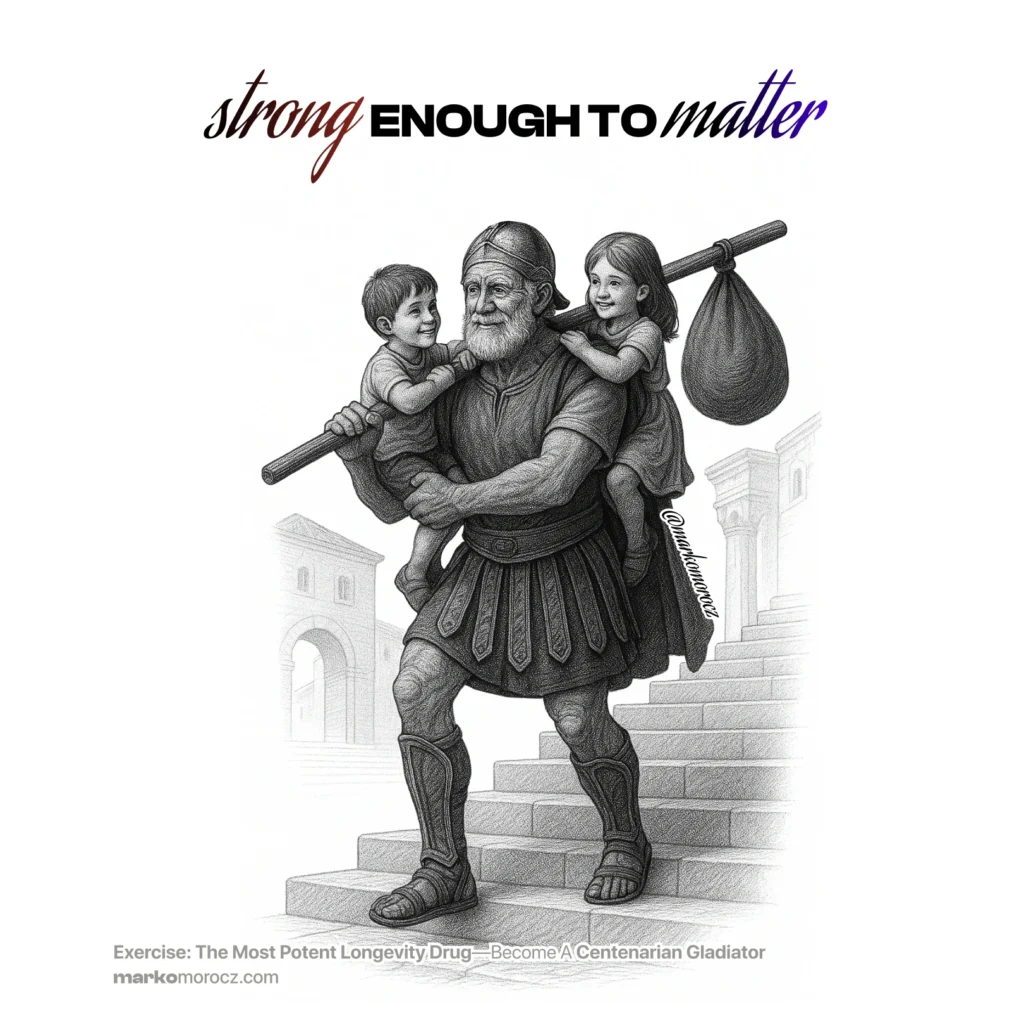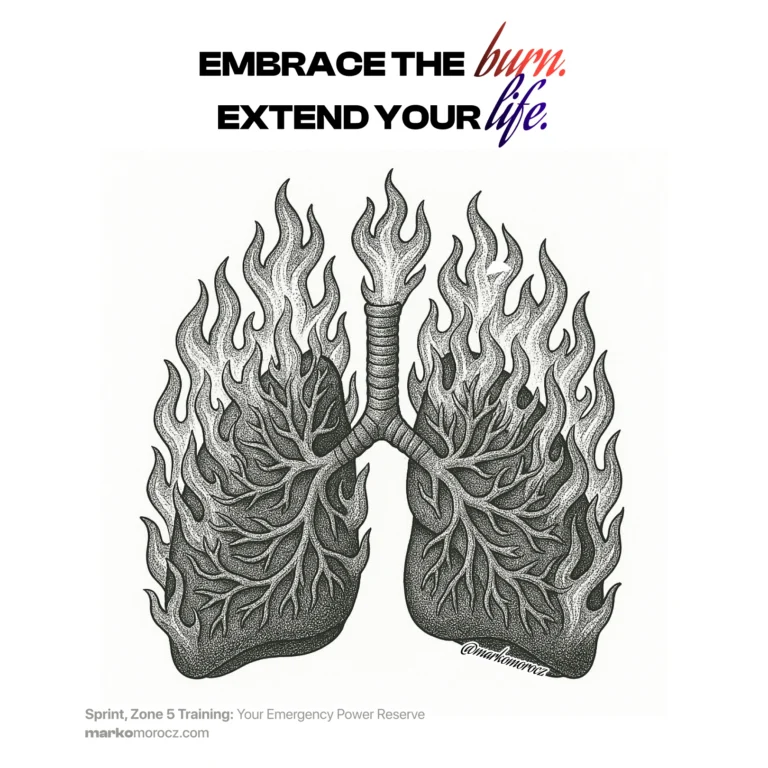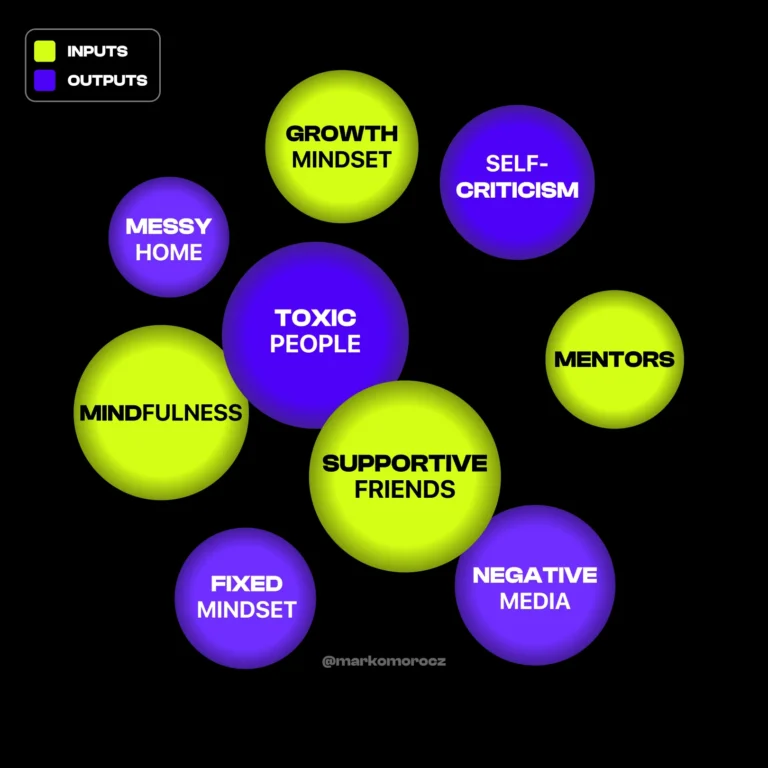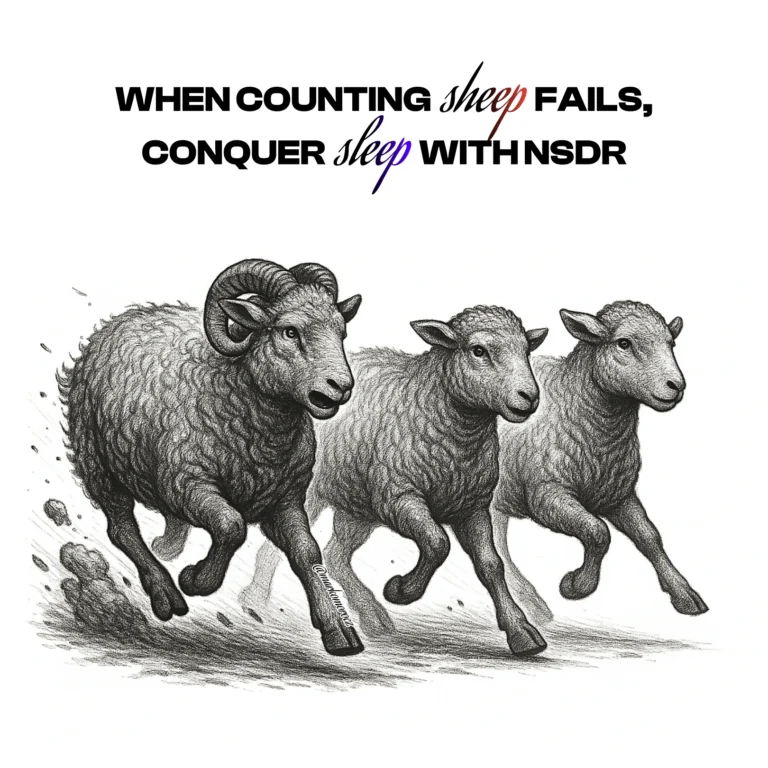Exercise: The Most Potent Longevity Drug—Become A Centenarian Who Matters
You train hard. You sweat. You show up.
But you’re building a spaghetti bridge. Flimsy. Unbalanced. Destined to snap when life applies real pressure.
Most people excel at one pillar of fitness while ignoring the other three. They crush the gym but can’t run a mile. They’re marathon machines who can’t touch their toes. They flow through yoga but couldn’t deadlift a grocery bag.
But your fitness bridge is only as strong as its weakest pillar.
Exercise isn’t just movement. It’s the single most potent drug for extending both lifespan and healthspan. No pill, no protocol, no biohack comes close.
The data doesn’t negotiate. Exercise delays death by up to 31%1, prevents cognitive decline by 38%2, and reduces all-cause mortality more than any pharmaceutical intervention ever created3.
But only when you engineer all four pillars correctly. Miss one, and your bridge to 100 crumbles.
The Centenarian Decathlon: Stop Training For Mirrors, Start Training For Life
Beach muscles? Instagram abs?
Cute. But they won’t help when you’re 90 and can’t get off the toilet.
Enter the Centenarian Decathlon—the only fitness test that matters. Coined by Dr. Peter Attia, it flips the entire game.
Instead of training for next summer’s pool party, you train for your 100th birthday party.

The concept is simple. List 10 physical tasks you want to do at 100. Then work backward to determine what you need to do today.
My decathlon looks like this:
- Carry my future grandkid up a flight of stairs
- Hop a fence if I need to (you never know)
- Get up off the floor with one arm
- Hike mountains, not just sidewalks
- Pull myself out of a pool like I own the place
- Sprint if someone needs help
- Make love (non-negotiable)
- Open any jar (no asking for help)
- Dance at my great-grandchild’s wedding
- Pick flowers to my sweetheart till my last day
Yours will be different. Maybe you want to climb Kilimanjaro at 80. Race your grandkids at 90. Play tennis at 95.
The principle remains: Whatever you want to do at 100, you better be doing twice as much at 50.
The Brutal Math of Aging
Here’s what most people miss: You don’t just need to maintain your current fitness to do these things at 100.
You need to build a massive reserve.
Why? Because aging is predictable in its theft:
- Muscle mass: 3-8% loss per decade after 304
- VO2 max: 10% decline per decade after 255
- Bone density: 1% loss per year after 406
- Balance and coordination: 25% decline by 707
- Power output: 3.5% loss per year after 658
Want to deadlift your 30-pound (14kg) grandkid at 100? You better be pulling 100+ pounds (45kg+) today.
Want to climb three flights of stairs at 90? You better be crushing stairmasters now.
The equation is simple: Build massive reserves or die frail.
This isn’t doom. It’s data.
Exercise: Your Weapon Against the Four Horsemen
Remember the Four Horsemen trying to kill you?
Exercise slaughters them all:
- Atherosclerotic Disease: Cardio reduces heart attack risk by 35%9
- Cancer: Exercise cuts cancer risk by 13-40% across types10
- Neurodegenerative Disease: Movement prevents cognitive decline by 38%2
- Metabolic Disease: Strength training improves insulin sensitivity by 48%12
One weapon. Four kills. That’s efficiency.
The Four Pillars of Longevity Bridge
Forget the bro-split. Forget the marathon mania. Forget the yoga-only cult.
Your bridge to 100 needs four unshakeable pillars. Engineer one poorly, and the whole structure fails when you need it most.

1. Stability: Your Foundation
The unsexy secret that keeps you unbreakable. It’s not about balance—it’s about controlling force through your entire system.
Perfect stability means perfect power transfer. Poor stability means eventual injury. Game over.
2. Strength: The Muscle Reserve
Your retirement account for physical function. The more you deposit now, the more you can withdraw later.
Never in human history has a 90-year-old said, “I wish I had less muscle.”
3. Endurance: Aerobic Base, Zone 2
The pace where you can chat but would rather not. This is where your mitochondria multiply, your fat-burning machinery upgrades, and your metabolic flexibility soars.
It’s boring. It’s essential. It’s non-negotiable.
4. Sprint: Anaerobic Performance, Zone 5
Maximum effort. Lungs screaming. Heart pounding. This is your “oh shit” reserve—the difference between catching yourself from a fall and becoming a statistic.
One session per week keeps you dangerous.
Miss any pillar and your bridge to centenarian status collapses.
The Coordination Secret Nobody Talks About
But here’s the secret most miss about building these pillars. The research screams but nobody hears: the best longevity sports aren’t just about fitness—they’re about coordination13.
Life expectancy gains:
- Tennis: +9.7 years
- Badminton: +6.2 years
- Soccer: +4.7 years
- Cycling: +3.7 years
- Swimming: +3.4 years
- Jogging: +3.2 years
See the pattern? Sports demanding coordination, reaction, strategy—they dominate.
This is why I’m obsessed with racket sports like smashing squash. One session delivers:
- Rotational power (aesthetic and athletic)
- Reaction training (saves you from falls)
- Strategic thinking (brain gains)
- Social connection (longevity multiplier)
- Variable intensity (perfect training)
- Pure fun (adherence hack)
Start with 30 minutes weekly. Pick a sport that makes you smile. Skill beats suffering every time.
The Death Of The Gym Bro Era
The revolution is here. And it’s beautiful.
Wrecked joints. Herniated discs. Torn shoulders. The bill for ego lifting always comes due.
People are waking up. Moving well is the new status symbol. Functional strength crushes mirror muscles.
The modern gladiator doesn’t just lift—they flow. They rotate. They carry. They explode. They endure.
The shift is profound:
- From chasing PRs → chasing perfect movement
- From muscle isolation → full-body integration
- From linear training → rotational power
- From gym performance → life performance
Because here’s the truth: Life doesn’t happen in perfect planes of motion.
You twist to grab things. Stabilize under uneven loads. Explode to save yourself. Your training should mirror your life.
Your Training Schedule That Beats Death
Enough philosophy. Here’s your exact minimum effective dose of exercise based on decades of research and the practices of the longest-lived populations:
Weekly Requirements:
- Stability: 60 minutes (broken into 5-10 minute daily hits)
- Strength: 3 × 45-60 minute sessions (compound movements, full body)
- Zone 2: 180+ minutes (4 × 45-minute sessions minimum)
- Zone 5: 30 minutes (one VO2 max intervals or 8 minutes max after each Zone 2)
Can’t hit these numbers immediately? Start with 50% and build. Better to begin small and stay consistent than go hard and burn out.
The Training Principles That Matter
1. Train Like You Live, Fight, And Love
Most people train for a life they’ll never live. Bodybuilders who never compete. Powerlifters who never need to lift 500 pounds (227kg). Marathoners who never need to run 26 miles (42km).
Meanwhile, they can’t:
- Carry groceries up three flights
- Play with their kids without getting winded
- Pick something off the floor without groaning
- Sprint for a bus without dying
Your training must match your life.
Think of each movement as reinforcing your bridge. Every rep strengthens a pillar. Every skipped session weakens the foundation.
- Get up and down from the floor (Turkish get-ups)
- Practice picking things up (deadlift variations)
- Rotate powerfully (medicine ball work)
- Carry uneven loads (farmer’s walks)
- Sprint occasionally (Zone 5)
- Move all day (Zone 2)
I’ve seen 70-year-olds who move like broken machines. And I’ve seen 70-year-olds who move like predators. The difference? One group trained for mirrors. The other trained for mountains.
2. The 80/20 Reality
Most people obsess over perfect form while skipping workouts. Or perfect timing while ignoring consistency. Or the latest trends while neglecting basics.
But here’s the math: A mediocre workout done consistently beats a perfect workout done sporadically.
80% of your longevity gains come from:
- Consistency over intensity: 3 average sessions per week destroys 1 perfect session
- Movement quality over load: Perfect form with 50% weight builds more than ego lifting
- Progressive overload over time: Small, steady gains compound into unstoppable momentum
- Recovery as part of training: Your muscles grow during rest, not during reps
The remaining 20%? That’s where the perfectionism lives. Optimize it after you’ve mastered the fundamentals.
The 80/20 Action Plan:
- Show up even when motivation dies (especially then)
- Focus on form until it’s automatic, then add load
- Increase something small each week—weight, reps, or time
- Plan recovery like you plan workouts
3. Listen to Your Body (With Data)
Your body whispers before it screams. Most people ignore the whispers, then wonder why they’re injured.
Smart training means combining biological signals with hard data.
Daily 2-Minute Check-In:
- Feel Check: Rate your energy (1-10), note any stiffness or pain
- Data Check: HRV, sleep score, resting heart rate—what’s your nervous system saying?
- Plan Check: What was scheduled vs. what makes sense today?
- Wisdom Check: Proceed, modify, or recover?
Decision Matrix:
- HRV down >10% + poor sleep = Zone 2 or mobility only
- Feel great + good data = Crush the planned session
- Mixed signals = Start easy, see how you feel after warm-up
- Pain or persistent fatigue = Active recovery or complete rest
This isn’t weakness. It’s intelligence. The strongest athletes are the ones who train the longest without breaking.
4. Progressive Overload: The Compound Interest of Strength
Your body adapts to stress by becoming stronger. But only if the stress progressively increases.
Too little progression? You plateau. Too much? You break.
The Sweet Spot Formula:
- Strength training: Add 2.5-5% weight when you hit target reps
- Bodyweight movements: Add 1-2 reps per week
- Zone 2 cardio: Extend duration by 5 minutes monthly
- Zone 5 intervals: Increase intensity or add 15 seconds per set
Timeline Expectations:
- Weeks 1-4: Neural magic—your brain learns to recruit muscle fibers efficiently
- Weeks 4-8: Real strength gains, noticeable cardiovascular improvements
- Weeks 8-16: Visual changes, significant performance jumps
- Months 6+: Compound benefits ripple across all health markers
Track Everything. Without measurement, you’re just sweating, not progressing.
When To Train
When you train matters almost as much as how:
Morning Training
Why morning dominates:
- Testosterone peaks 25-50% higher in morning (especially in men)14. Use them or lose them
- Improved focus throughout the day
- Better adherence long-term
- Enhanced circadian rhythm alignment
There are seasons, like now, when I’m so obsessed that I work until midday in one go. Hit the gym. Then I’m refreshed and ready to smash the rest of the day.
Evening Training
Never train within 4 hours of sleep. Your body temperature needs to drop. Training jacks it up. Kiss your recovery goodbye.
What happens when you ignore this:
- Elevated core temperature disrupts sleep
- Increased cortisol when you need it lowest
- Impaired recovery
The fix is simple: Finish intense training by 6 PM if you sleep at 10 PM. Your body needs time to cool down and shift into recovery mode.
Training Twice A Day
Double sessions aren’t about showing off. They’re about specialization and recovery optimization.
When It Makes Sense:
- Sleep, nutrition, and recovery are dialed in
- You’ve been training consistently for 6+ months
- You have specific performance goals
The Strategic Split:
- Morning (20-45 min): Stability + Zone 2 cardio
- Evening (45-60 min): Strength or Zone 5 intervals
The Rules:
- Minimum 6-hour gap between sessions
- Alternate priorities: Morning strength = evening cardio (and vice versa)
- Fuel between sessions: This isn’t fasting territory
- Must finish 4+ hours before sleep
Warning Signs to Scale Back:
- HRV declining for 3+ days
- Sleep quality dropping
- Persistent soreness or motivation loss
Remember: More isn’t always better. Better is better.
The Compound Effect: How Exercise Amplifies Everything
Exercise doesn’t work in isolation. It’s the multiplier for your entire longevity stack:
- Sleep: Improves deep sleep by 65% and sleep efficiency by 13%15
- Stress: Reduces cortisol by 23% and increases stress resilience16
- Mental Health: Beats antidepressants in head-to-head studies17
- Nutrition: Enhances nutrient absorption and metabolic flexibility18
Master exercise, and everything else gets easier.
This Isn’t Fitness. It’s Future-Proofing.
You’re not training for today. You’re training for the you that doesn’t exist yet.
The you at 70 who travels the world. The you at 90 who still dances. The you at 100 who thrives independently.
Every rep is a deposit. Every workout is an investment. Every recovery day is compound interest.
The arena doesn’t care about your excuses. Neither does aging.
But you? You’re sculpting something unstoppable.
Because living long means nothing if you can’t live well.
Your century awaits. Start building your bridge.
References
- Lear SA, et al. (2017). “The effect of physical activity on mortality and cardiovascular disease in 130,000 people from 17 high-income, middle-income, and low-income countries: the PURE study.” Lancet. ↩︎
- Northey JM, et al. (2018). “Exercise interventions for cognitive function in adults older than 50: a systematic review with meta-analysis.” British Journal of Sports Medicine. ↩︎
- Pedersen BK, Saltin B. (2015). “Exercise as medicine – evidence for prescribing exercise as therapy in 26 different chronic diseases.” Scandinavian Journal of Medicine & Science in Sports. ↩︎
- Volpi E, et al. (2004). “Muscle tissue changes with aging.” Current Opinion in Clinical Nutrition & Metabolic Care. ↩︎
- Fitzgerald MD, et al. (1997). “Age-related declines in maximal aerobic capacity in regularly exercising vs. sedentary women: a meta-analysis.” Journal of Applied Physiology. ↩︎
- Riggs BL, et al. (1998). “A population-based assessment of rates of bone loss at multiple skeletal sites: evidence for substantial trabecular bone loss in young adult women and men.” Journal of Bone and Mineral Research. ↩︎
- Sturnieks DL, et al. (2008). “Balance disorders in the elderly.” Neurophysiologie Clinique. ↩︎
- Skelton DA, et al. (1994). “Strength, power and related functional ability of healthy people aged 65-89 years.” Age and Ageing. ↩︎
- Lear SA, et al. (2017). “The effect of physical activity on mortality and cardiovascular disease.” Lancet. ↩︎
- Moore SC, et al. (2016). “Association of Leisure-Time Physical Activity With Risk of 26 Types of Cancer.” JAMA Internal Medicine. ↩︎
- Northey JM, et al. (2018). “Exercise interventions for cognitive function in adults older than 50: a systematic review with meta-analysis.” British Journal of Sports Medicine. ↩︎
- Bird SR, Hawley JA. (2017). “Update on the effects of physical activity on insulin sensitivity in humans.” BMJ Open Sport & Exercise Medicine. ↩︎
- Schnohr P, et al. (2018). “Various leisure-time physical activities associated with widely divergent life expectancies: the Copenhagen City Heart Study.” Mayo Clinic Proceedings. ↩︎
- Diver MJ, et al. (2003). “Diurnal rhythms of serum total, free and bioavailable testosterone and of SHBG in middle-aged men compared with those in young men.” Clinical Endocrinology. ↩︎
- Kredlow MA, et al. (2015). “The effects of physical activity on sleep: a meta-analytic review.” Journal of Behavioral Medicine. ↩︎
- Schuch FB, et al. (2019). “Physical activity and incident depression: A meta-analysis of prospective cohort studies.” American Journal of Psychiatry. ↩︎
- Blumenthal JA, et al. (2007). “Exercise and pharmacotherapy in the treatment of major depressive disorder.” Psychosomatic Medicine. ↩︎
- Hawley JA, Leckey JJ. (2015). “Carbohydrate dependence during prolonged, intense endurance exercise.” Sports Medicine ↩︎





